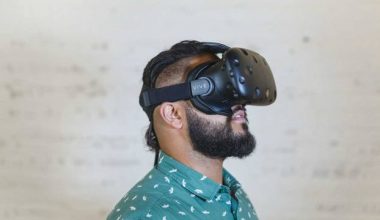
Globalization and political polarization barrel forward at breakneck speeds, the #MeToo movement continues to ignite conversations about women in the workplace, and migration and nationalist ideals are coming to a head. For these reasons and more, diversity and inclusion (D&I) continue to be top of mind for many organizations and their people.
“D&I is deeply personal,” Hitendra Wadhwa, Columbia professor of practice and founder of the Institute for Personal Leadership, told a Forbes contributor earlier this year. “It goes really deep into the core of who you are, how you were raised, dinnertime conversations with your family, things that happened to you at school. These dynamics have shaped your beliefs about humanity, whether some groups are superior or inferior, who gets it and who doesn’t, who is trustworthy and who is not.”
Businesses that invest in D&I training open their doors to more people; minimize harm and discomfort within their walls; and make their organization a better, more welcoming place for their employees. Additionally, D&I has a compelling business case. Companies with diverse management teams:
Have 19% higher “innovation revenue.”Are more attractive to millennials (who will make up 75% of the global workforce by 2025).Are more likely to capture new markets.
Despite the importance of D&I training, however, industry experts are generally on the same page when it comes to effectiveness: D&I training as we know it isn’t working. First of all, employees typically don’t respond well to training that feels obligatory, rote or forced. D&I training is at its least effective when it’s delivered through an impersonal slideshow about what employees should and shouldn’t do. This type of training, which spills over from the dawn of the civil rights movement, is designed to avoid lawsuits but can actually breed more exclusion and bias: Members of minority groups can feel singled out and targeted, while some members of majority groups ignore the training or take it as a challenge to flex their dominance.
So, how do we deliver on the need for workplace D&I without undermining that goal with ineffective training? Immersive learning technologies may be part of the answer.
Sharing Perspective
Employees in underrepresented groups are often taxed with the burden of “managing aspects of their identity in a way that the dominant group would not have to do,” Kenji Yoshino, chief justice Earl Warren professor of constitutional law, said in a 2014 New York University Law School article. “These individuals felt they had to work their identities alongside their jobs.”
In light of these difficulties, one important aim of D&I efforts is to help employees understand the experience of their co-workers, especially the ones who come bearing different identities and having had different experiences than they. This disconnect in workday experience helps explain the persistence of non-malicious inappropriate behaviors — such as unconscious bias, microaggressions and exclusionary actions — which are difficult to identify and understand without lived experience.
Yoshino and Christie Smith, managing principal of the Deloitte Leadership Center for Inclusion, argue that organizations should dedicate time to “positively uncover” the quantifiable burden of carrying underrepresented identities and experiences in the workplace. In other words, there is incredible value in understanding the stories of your co-workers and in knowing what it’s like to spend a workday in their shoes.
If you’re familiar with the “superpowers” of virtual reality (VR), the phrase “spend a workday in their shoes” may ring some bells. Immersive technologies are ideal for sharing experiences due to those superpowers of presence and empathy. Because these technologies put users into engaging environments, they can help show unique perspectives, prompting growth and understanding that may not otherwise be possible.
Imagine, for example, you are trying to show a group of men what it’s like to be the only woman in a boardroom. Do you think it would be more effective to provide a pamphlet or informative video that explains how it feels or to give man the opportunity to sit through a meeting where board members talk over them, make off-color jokes at their expense, never make eye contact and use intimidating body language?
Experiencing these stories in VR can be like watching a film in color for the first time — color that is especially important when dealing with nuanced and vulnerable interpersonal concepts. For an example of what this immersive perspective-sharing might look like, check out this #MeToo experience, in which a young woman explains what it’s like to be one of the 25% to 85% of women who have experienced sexual harassment in the workplace.
The Power of Practice and Exposure
Of course, understanding these stories isn’t enough; employees must also have the tools to change their behavior and intervene in negative situations. In the past, we’ve given employees “tools” in the form of worksheets (“If X happens, be sure to do Y”) or roleplays, which can be awkward and embarrassing, especially for new hires who are meeting their co-workers for the first time.
One thing we know about changing behavior is that practice is key. By moving from passive information consumption to active learning through targeted, repeated practice, we are much more likely to make a lasting impact on learners’ behavior.
Dr. Britt Andreatta, an internationally recognized thought leader who creates brain science-based solutions for today’s challenges, boils this process down to a science: In her book “Wired to Grow: Harness the Power of Brain Science to Learn and Master Any Skill,” she writes, “Any neural pathway is built and strengthened through repetitions. This is why practice is so vital.”
Through repeated exposure, recall and practice, learners reinforce specific neural pathways in their brains, rewiring them to perform that action better and with less thought. The coolest part? We can create this experience in VR.
By putting users in the middle of the experience, immersive technologies enable their brains to encode episodic memories as though they happened in real life. In the past, organizations have been limited to theoretical explanations, online exercises that fail to emulate real life or the often-dreaded roleplay. Using VR and other immersive technology, on the other hand, trainees gain exposure, practice repeatedly and ultimately learn how to confidently navigate uncomfortable interactions in the workplace.
Currently, an estimated 75% of incidents of workplace harassment go unreported and unchallenged. When they experience or witness harassment, especially from a leader or supervisor, many individuals have trouble recognizing that what’s happening is inappropriate. By witnessing these types of events in VR, employees can see what inappropriate workplace conduct looks like and experience the process of standing up, intervening, providing care to co-workers and reporting the incident. Then, when something similar occurs in real life, employees are emboldened with confidence from having already taken the steps to de-escalate an issue and handle it appropriately.
With VR, organizations have a better tool than ever before to address the urgent need for impactful D&I training. VR enables training leaders to help build employees’ empathy, share perspectives, and equip everyone in the organization with the tools he or she needs to address exclusion, harassment and challenging interactions.







